Whether your goal is adding quick curb appeal, shade or privacy, here are 10 trees that provide results faster than average.
10 Fast-Growing Trees to Fill Out Your Landscape
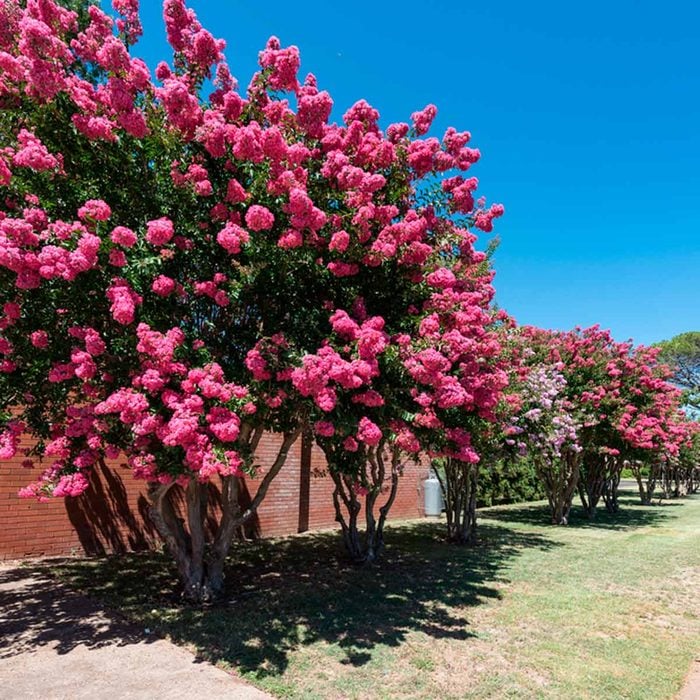
Crape Myrtle
A favorite throughout the South, crape myrtles are available as hybrids that grow in a wide range of habitats. Red Rocket shoots skyward up to 5 feet a year and has cherry-red flowers. Another fast-growing variety, Natchez, has white blossoms. Use crape myrtles as specimen plantings or as part of a showy privacy screen.
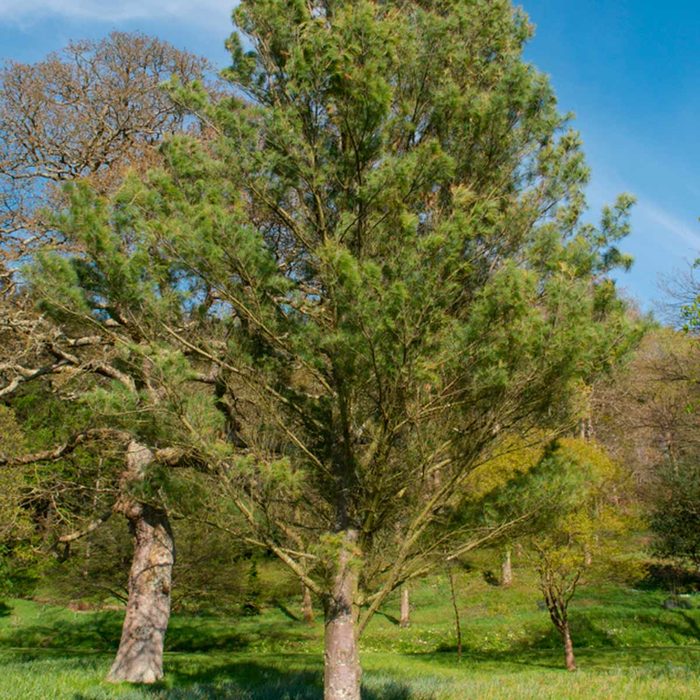
White Pine
This fast-growing evergreen is a native that thrives in a variety of soils and is ideal for adding privacy or creating a windbreak. It grows large, so plant it in an open location with lots of sun.

Bald Cypress
The bald cypress is perfect for damp or soggy areas and thrives in partial to full shade. It is a deciduous conifer, with needles that turn orange in the fall and then drop to reveal an attractive fruit. If you have the room, bald cypress makes a superb specimen in your rain garden.

Tulip Poplar
This fast-growing tree (actually a member of the magnolia family) has interesting spring blossoms. In the fall, its leaves turn a beautiful yellow. Few insects or diseases afflict the tree, but its weak wood is susceptible to storm damage.
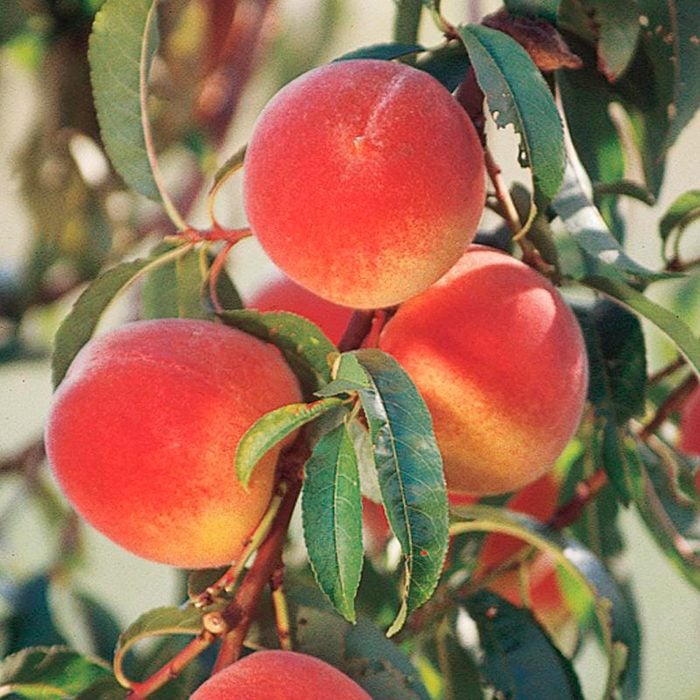
Elberta Peach
This tree can reach 15 feet in just a few years. It self-pollinates, producing fruit that is suitable for eating fresh, freezing or canning. Plant Elberta peach trees along sunny edges or in dappled shade.

Pin Oak
Oaks have a reputation for slow growth, but the pin oak is an exception, growing as much as 2 feet annually. Its glossy dark-green leaves turn bronze or red in the fall. Squirrels and deer feed on its acorns. It needs at least 6 hours of direct sunlight daily.
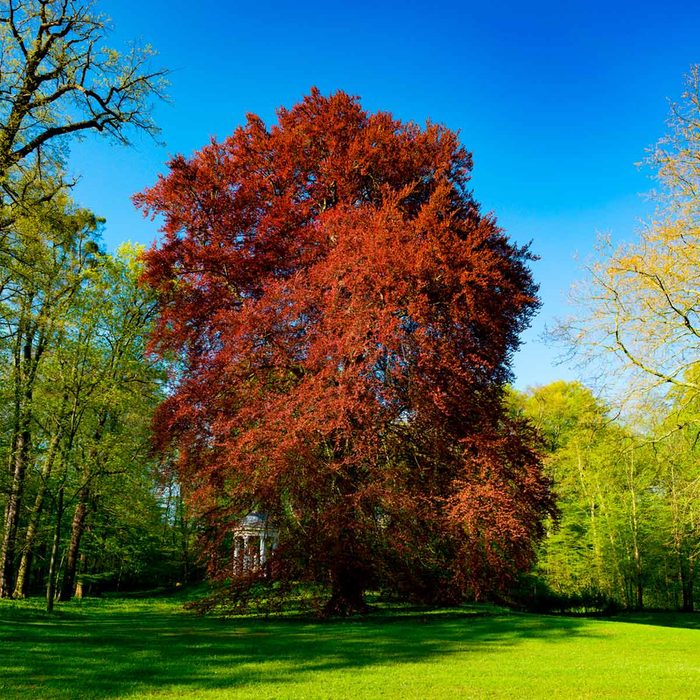
Red Maple
This ornamental easy to grow tree is also fast-growing. It produces brightly colored yellow or red leaves early in the fall and is a much better choice than silver maple or boxelder. Plus, it produces pollen early in the spring, which may help nourish bees and other pollen-dependent insects.

Quaking Aspen
Quaking aspen is prized for its white bark and brilliant fall color. It also grows quickly, up to 2 feet annually. It is best planted in clusters and away from buildings that could be damaged by its aggressive roots. At maturity, it can reach more than 50 feet.
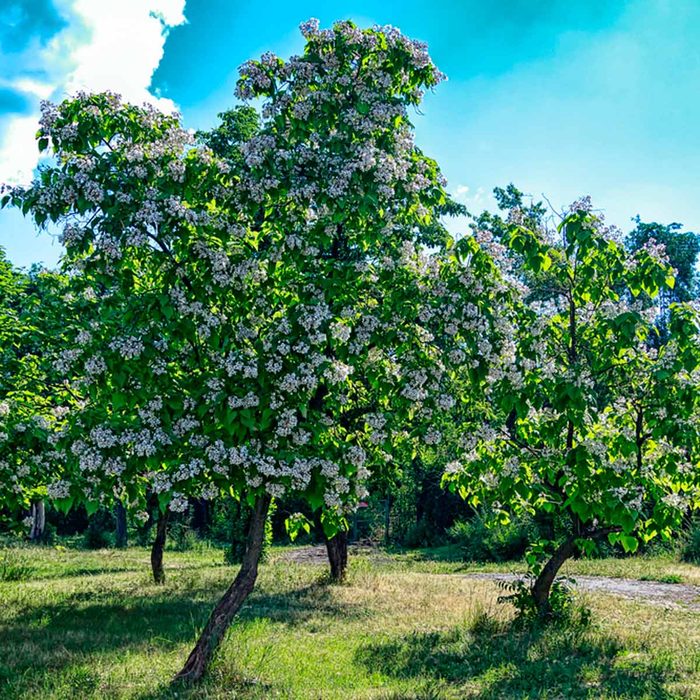
Northern Catalpa
You can’t mistake this tree’s large tropical-looking leaves, trumpet-shaped white flowers and dangling seed pods. Its twisting trunk and branches provide additional interest. Plant this fast-growing shade tree away from buildings, septic systems and sidewalks.
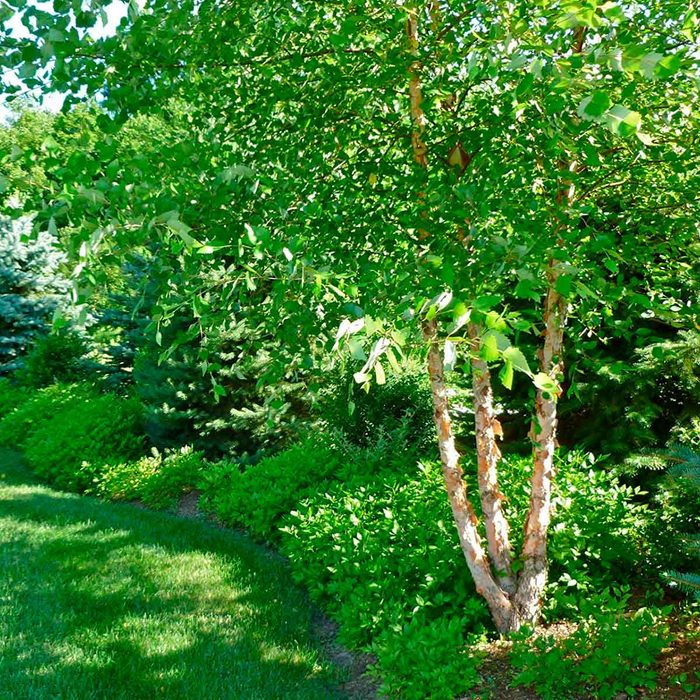
River Birch
This graceful tree sprouts light green leaves in the spring, and in the fall, male catkins drip from its branches. The peeling bark offers year-round beauty, making it one of our favorite fast-growing trees. Turkey and grouse feed on River Birch seeds and deer eat its leaves. Planted in full sunlight, this tree will grow as much as 3 feet per year.
